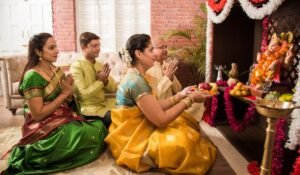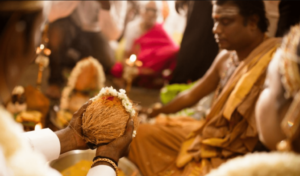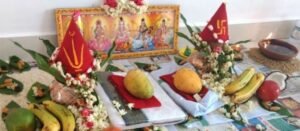Organizing a puja involves several key aspects, and the specific information needed may vary depending on the type of puja, traditions, and personal preferences. However, here is a general list of information typically required to organize a puja:
- Type of Puja: About the specific puja you intend to perform (e.g., Satyanarayan Puja, Ganesh Puja, Durga Puja, etc.).
- Date and Time: Decide the date, time, and duration of the puja. Consider auspicious dates and timings, which may vary based on religious beliefs or astrological considerations.
- Venue: Determine where the puja will take place, whether it’s at home, or any other specific location.
- Priest or Purohit: Arrange for a qualified priest or purohit who specializes in conducting the chosen puja. They will lead the rituals and chants.
- Puja Materials (Puja Samagri): Prepare a list of items required for the puja, such as flowers, incense sticks, fruits, sweets, sacred threads, idols or pictures of deities, coconut, camphor, ghee, rice, turmeric, betel leaves, etc. Some pujas might require specific items, so it’s essential to confirm these beforehand.
- Offerings, Prasad or any Special food/cousine: Plan the offerings (bhog) and prasad (sacred food) that will be distributed among the attendees after the puja.
- Guest List: Determine who will participate in the puja and invite family, friends, and community members if it’s a community event.
- Rituals and Mantras: Understand the specific rituals, prayers, and mantras associated with the chosen puja. The priest or purohit can guide in performing these correctly.
- Satsang: If a Satsang (spiritual discourse or gathering) is part of the event, organize a speaker or spiritual leader to conduct it. Arrange seating and any necessary audiovisual equipment.
- Kirtan: Plan for devotional singing or Kirtan sessions. Coordinate musicians or singers if needed and prepare any musical instruments or sound systems required.
- Path/Mantra Jaap: If Path (reading of scriptures) or Mantra Jaap (repetitive chanting of specific mantras) is part of the puja, arrange for individuals or a group to perform these activities.
- Decorations: Decide on the decorations for the puja area. This might include colorful cloths, flowers, rangoli (decorative designs), and other traditional decorations.
- Dress Code: Specify if there’s any traditional dress code (white, yellow, red, green etc.) for the participants.
- Donations or Charitable Act: Some pujas involve giving donations or performing charitable acts as part of the ritual. Plan accordingly if such activities are involved.
- Audio/Visual Arrangements: Arrange for any audio systems, speakers, microphones, or instruments needed for chanting or playing religious songs or mantras if puja performed in a large group.
- Cleanliness and Preparation: Ensure the area where the puja will take place is clean and prepared according to religious traditions.
- Photography/Recording: Decide whether photography or recording of the puja is permitted or restricted.
- Post-Puja Activities: Plan any additional activities or rituals that might follow the main puja, if applicable.
It’s advisable to consult with a knowledgeable person or a priest if you’re unfamiliar with any specific rituals or requirements associated with the particular puja you’re organizing. They can provide guidance and ensure the puja is conducted properly according to traditions and customs.








No comment yet, add your voice below!